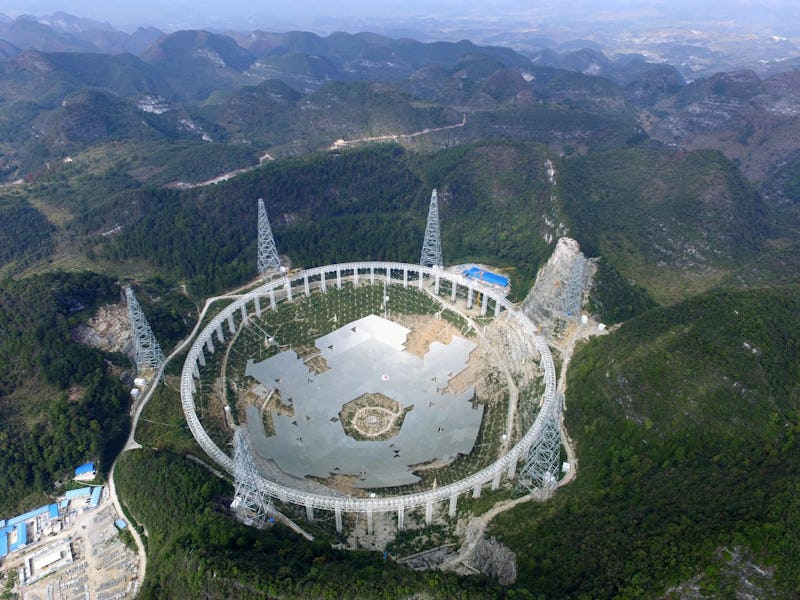Breakthrough Initiatives Enlists China in Hunt for Aliens

Breakthrough Initiatives, an organization founded by Russian billionaire Yuri Milner to investigate extraterrestrials, has partnered with the National Astronomical Observatories of China in order to bring the world’s largest radio telescope online in the search for alien life.
“‘Are we alone?’ is a question that unites us as a planet, and the quest to answer it should take place at a planetary level, too,” said Yuri Milner, founder of the Breakthrough Initiatives, in a news release. “With this agreement, we are now searching for cosmic companions with three of the world’s biggest telescopes across three continents.
The “Five-hundred-meter Aperture Spherical Telescope”, or FAST, is a $180 million, 1,600 foot-long radio telescope that basically acts a giant ear for listening in on the universe’s stray radio waves — ideally those generated by intelligent life in other parts of the galaxy. It should be capable of receiving signals from 1,000 light years away.
FAST’s technological capabilities are perhaps only matched by the controversy attached to its construction history. China hastily evicted 9,000 people from the area in order to build FAST, compensating villagers with $1,822 each for the trouble.
The new collaboration falls in line with Breakthrough’s Listen initiative, which is all about untangling the mess of radio signals coming at Earth and combing the data for signs that we might not be all alone in the universe. It’s already using two of the world’s biggest radio telescopes: the Green Bank Telescope in West Virginia, and the Parkes Observatory in New South Wales, Australia.
People are probably more familiar with the organization’s other initiative: Starshot, which has plans to send nanocraft space robots all the way to neighboring star system Alpha Centauri, in partnership with Stephen Hawking and other big-name physicists.
FAST was turned on for the first time last month, and the long process of calibration and testing has begun. That could take three years, and will depend on an astonishing level of cooperation from astronomers around the globe. The partnership with Breakthrough Initiatives should help ensure the telescope’s success, and then the rest of us will finally learn if it’s all it’s cracked up to be.